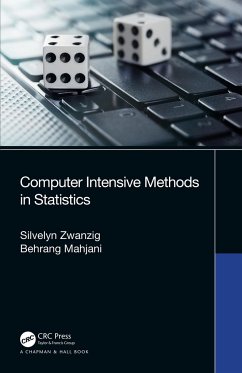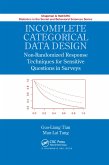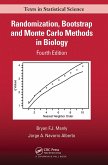This textbook gives an overview of statistical methods that have been developed during the last years due to increasing computer use, including random number generators, Monte Carlo methods, Markov Chain Monte Carlo (MCMC) methods, Bootstrap, EM algorithms, SIMEX, variable selection, density estimators, kernel estimators, orthogonal and local polynomial estimators, wavelet estimators, splines, and model assessment. Computer Intensive Methods in Statistics is written for students at graduate level, but can also be used by practitioners.
Features
Presents the main ideas of computer-intensive statistical methods
Gives the algorithms for all the methods
Uses various plots and illustrations for explaining the main ideas
Features the theoretical backgrounds of the main methods.
Includes R codes for the methods and examples
Silvelyn Zwanzig is an Associate Professor for Mathematical Statistics at Uppsala University. She studied Mathematics at the Humboldt- University in Berlin. Before coming to Sweden, she was Assistant Professor at the University of Hamburg in Germany. She received her Ph.D. in Mathematics at the Academy of Sciences of the GDR. Since 1991, she has taught Statistics for undergraduate and graduate students. Her research interests have moved from theoretical statistics to computer intensive statistics.
Behrang Mahjani is a postdoctoral fellow with a Ph.D. in Scientific Computing with a focus on Computational Statistics, from Uppsala University, Sweden. He joined the Seaver Autism Center for Research and Treatment at the Icahn School of Medicine at Mount Sinai, New York, in September 2017 and was formerly a postdoctoral fellow at the Karolinska Institutet, Stockholm, Sweden. His research is focused on solving large-scale problems through statistical and computational methods.
Features
Presents the main ideas of computer-intensive statistical methods
Gives the algorithms for all the methods
Uses various plots and illustrations for explaining the main ideas
Features the theoretical backgrounds of the main methods.
Includes R codes for the methods and examples
Silvelyn Zwanzig is an Associate Professor for Mathematical Statistics at Uppsala University. She studied Mathematics at the Humboldt- University in Berlin. Before coming to Sweden, she was Assistant Professor at the University of Hamburg in Germany. She received her Ph.D. in Mathematics at the Academy of Sciences of the GDR. Since 1991, she has taught Statistics for undergraduate and graduate students. Her research interests have moved from theoretical statistics to computer intensive statistics.
Behrang Mahjani is a postdoctoral fellow with a Ph.D. in Scientific Computing with a focus on Computational Statistics, from Uppsala University, Sweden. He joined the Seaver Autism Center for Research and Treatment at the Icahn School of Medicine at Mount Sinai, New York, in September 2017 and was formerly a postdoctoral fellow at the Karolinska Institutet, Stockholm, Sweden. His research is focused on solving large-scale problems through statistical and computational methods.
"...The book is rich in content, excellent in coverage, highly informative, extremely reader friendly in style, and full of cartoon illustrations. The reader will find this book as a collection of the most important ideas and tools that are used in computer intensive methods for statistical analysis and data analytic investigations...The book can be used by upper undergraduate and graduate students as well as researchers and practitioners in statistics, data science, and users of all disciplines. The good news is that it is available in paperback.
- Subir Ghosh, Technometrics, Volume 62
- Subir Ghosh, Technometrics, Volume 62









